Open Season
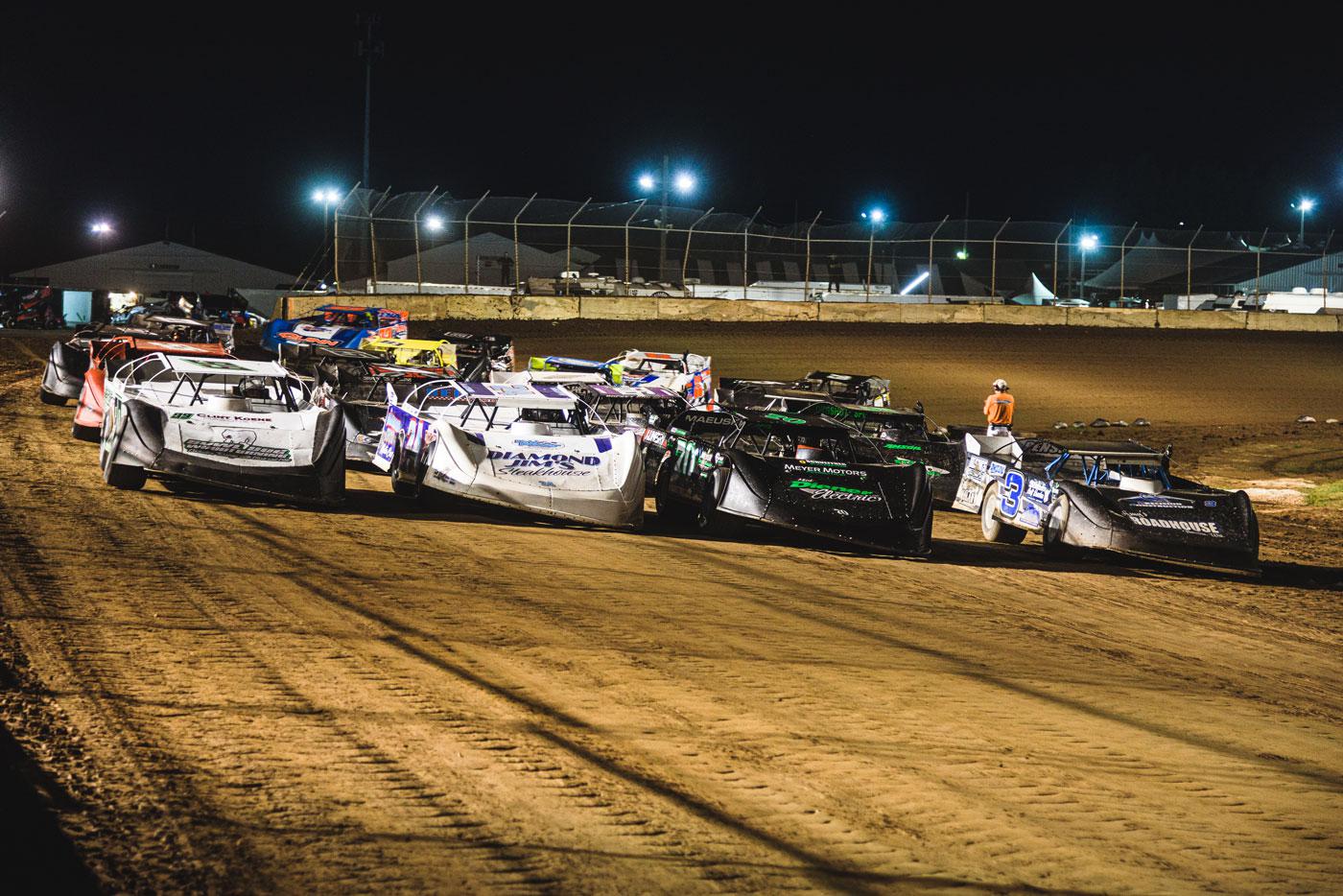
How today’s race series, engine builders, and drivers are working within rule sets to ensure the continued growth of dirt late model racing.
Bill Schlieper’s engine building company, Pro Power Racing of Sullivan, Wisconsin, is a prolific supplier of engines for all kinds of racers, including a number of dirt late model clients. Over the years, he has seen racing series and sanctioning bodies write, re-write, borrow, and adapt engine rules in attempts to save competitors money, achieve parity on the track, do a better job of filling Saturday night events, or some combination of all three. In many cases, he believes, those attempts have backfired and done just the opposite.
“I’ve watched it happen over the years, where racers picked their favorite engine,” he explained. “Whether they helped design it or were a part of it, they were excited to have it. Then all of a sudden, a series or sanctioning body would decide, ‘Hey, we have a better idea, and we’re going to save you money.’ Well, they took what you had picked and made it worthless, made it something you couldn’t use. It was very frustrating for a lot of teams. A lot of sanctioning bodies made whole complete teams quit. Guys were sick of the rules changes and sick of having assets that they loved that became worthless.”
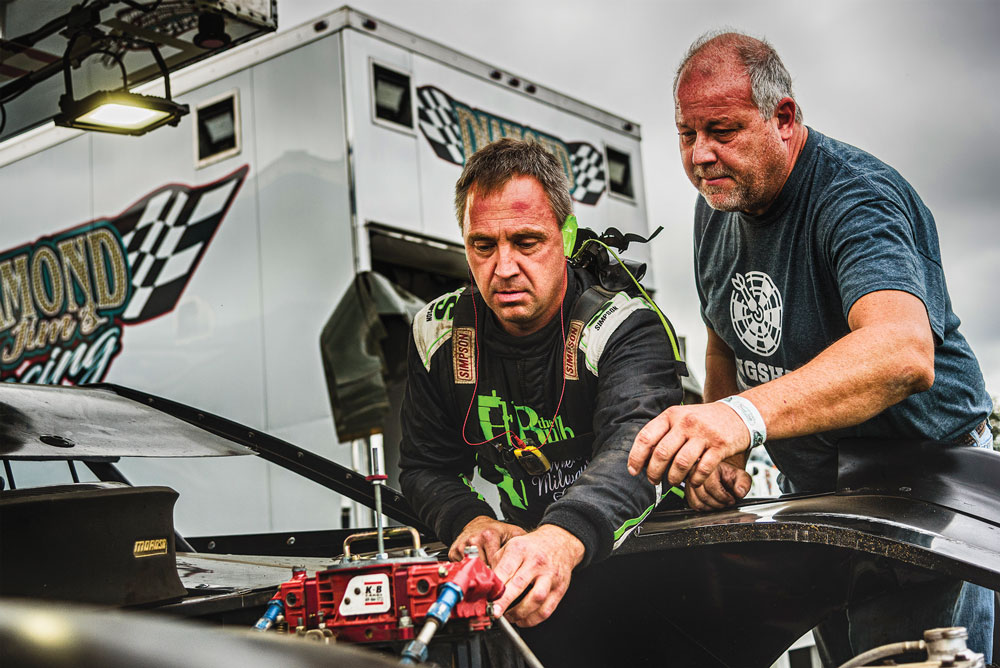
Schlieper also sees danger in engine rules that are too complex. “When there’s a large rulebook and a lot of rules, there’s more cheating. When rules are very strict and very specific, where you have to measure within thousandths and cc’s and cubic inches, often they just let it go, they don’t even check it. But when the rules are simple, everybody can understand them, and they’re easy to follow and they’re easy to tech, tech guys tend to tech them.”
Mark Campbell of the Edelbrock Group in Olive Branch, Mississippi, agreed. “If you don’t have qualified personnel or enough personnel to properly tech engines, absolutely it can get carried away. I’m a racer myself, and I was previously an engine builder for 20 years, so I know exactly what Bill’s talking about.
“Even in these crate motor classes, where they’re supposed to be sealed engines, these guys are crafty,” Campbell continued. “It’s the engine builder’s job to make as much power as they can, and, of course, find the gray areas in the rules. But if you don’t have an educated or a big enough group of people to properly inspect those engines and tech them, things can get out of control very quickly.”
“The bigger you write a rulebook, the more loopholes you write into it, and that’s exactly what it is with crate motors,” said Jason Shultz of the Dirt Kings Late Model Tour, Freedom, Wisconsin. “They say you have to run this valve spring; now somebody’s going to make a valve spring that looks identical but it’s a different material, so the tensile strength of the spring has a different rate. That makes a big difference. Or they’re going to find a way to change the camshaft or regrind the cam and do what they need to do to change the entire performance of the engine. Really, the only way you’re going to find it is completely tear down a crate motor. I have huge issues with the idea of tearing down a crate motor, when the cost of the tear-down will outweigh the winnings the driver might take home.”
Engine rules have been “a hot topic for many years now,” Campbell said. “We see a lot of challenges out there, with all the different classes and different rules. Things start to divide. We only have so many racers. If you make too many rules in too many classes, you wind up paring down a lot of the classes to where they’re a lot smaller. Or some of them just end up dying off because they simply don’t have any car count. If you leave the rules too open, then it becomes a money game, and then you segregate a lot of the classes based on just dollars. It becomes a rich man’s sport.
“We want to keep racing strong and going hard, but when you start making too many rules or making it too challenging for the people to do it, it becomes a big problem,” he said. “I don’t envy the rule makers. It’s very challenging and very tricky to find a happy spot in the middle.”
The Open Motor Solution
What Schlieper advocates to address these various problems is simplifying engine rules. Allow dirt late model racers to run open engines while allowing the race series to set power limits on those engines by using restrictor plates.
“In the WISSOTA series there’s a spec limit of 700 horsepower, and when the track’s slick or it’s a small track, you actually have a competitive car against an open car straight-up,” Schlieper pointed out. “But what WISSOTA did was put a restrictor on the open motor to match the 700 horsepower. That made it so local engines could race against travelers when they came to town. More and more guys saw that they could run an open engine, and be competitive at the local race track, because they ran the same rules.
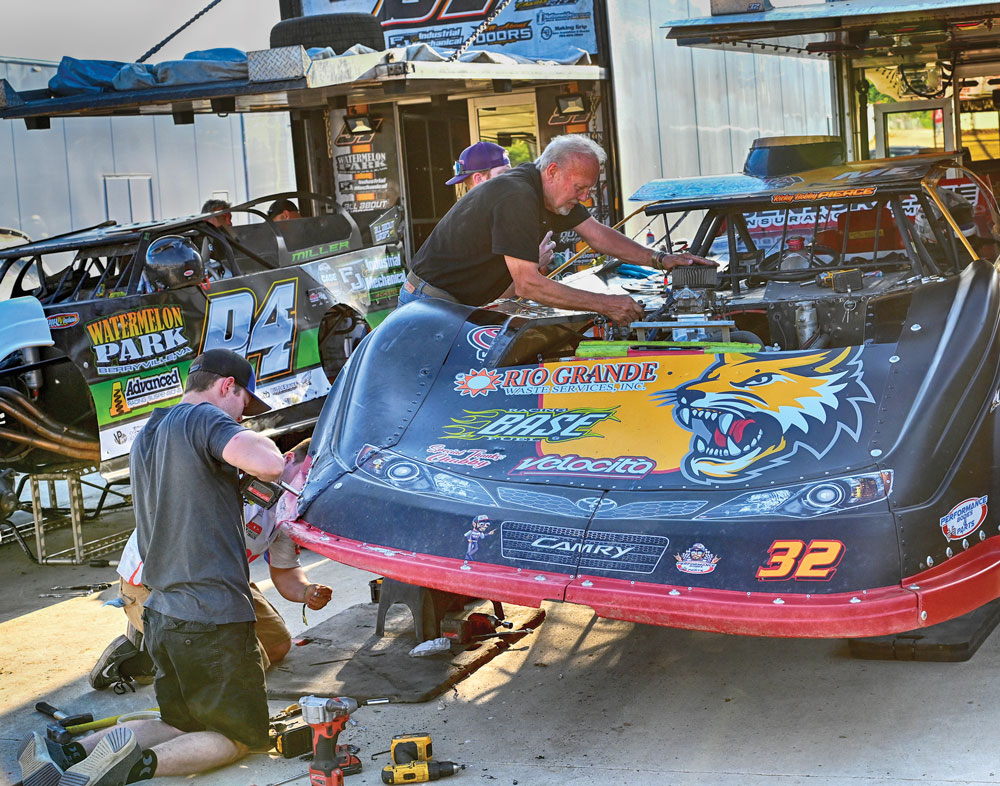
“The rules are a $30 restrictor. They can change your engine package for $30,” Schlieper added. “Now you don’t have to start over or throw your engine away.”
Plus, “you never hear that somebody got cheated with an open engine,” Schlieper said. “It doesn’t even exist. That’s why I’ve always been a proponent of open engines. Guys like my little brother [Dan Schlieper] started with used open engines, and he won the World 100 with a used engine. If you can win at the highest level with a used engine, that’s probably the best rule you can have. Because most guys have more power than they need. It just helps the guys who are getting new ones to sell the old ones because the old ones are just as competitive.”
Allowing open motors—with restrictors as needed—gives drivers more flexibility in terms of where and in which series they race.
“A racer like Bobby Pierce can unload his car that’s legal anywhere in the country, put on a carburetor restrictor that he already has in the trailer because they run it when the track dries out, and he’s now Dirt Kings Tour legal, no questions asked,” Shultz explained.
Pro Power open motor customer Taylor Scheffler “has the opportunity to race against WISSOTA motors and against the Dirt Kings, but he can still race across the border in Illinois when Farmer City comes for $25,000 to win,” Schlieper added.
Racer Andrew Kosiski, whose father Joe started the Super Late Model Racing (SLMR) series, has open and spec-headed engines for his dirt late model. “I have two spec-headed motors. I like the way they drive, but when there’s an open motor race coming up, those ain’t gonna keep up. Then I have to put this open motor that Bill Schlieper just got done with, put it in the car and race it. I’ll race it with three or four of our Malvern Bank races because it happened to be what’s in the car. Throw a restrictor plate on it, run it with the SLMR, take the restrictor plates out, and race it wide open.”
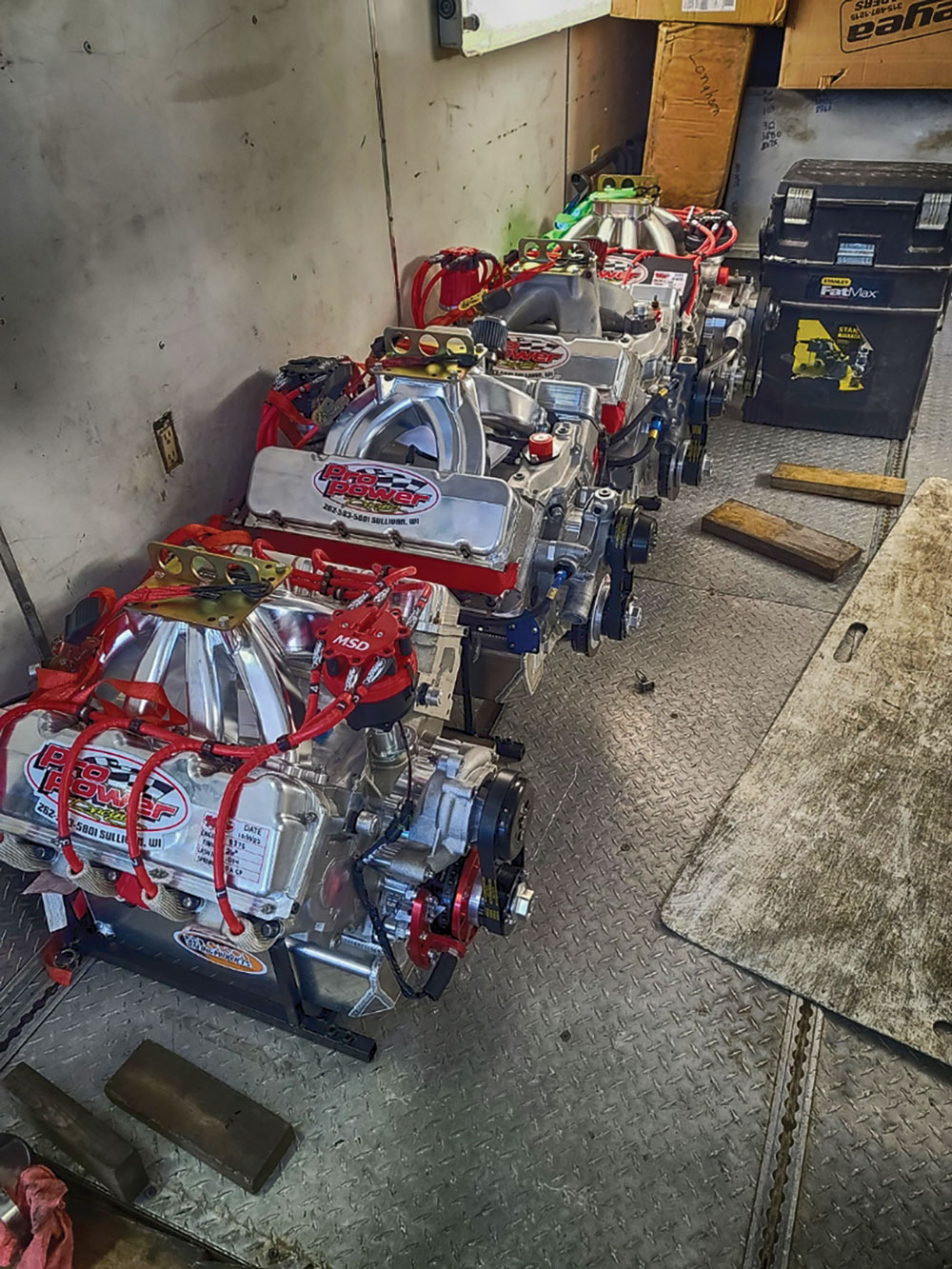
Schlieper also contends that an open motor makes the drivers better and makes for better racing. “When you have more power than you need, you end up with guys who have to use their foot. They become throttle jockeys, guys who can control every part of the race car. It becomes very much of a driver’s race, instead of a horsepower race, or just the guy who had the most money race. Many of these drivers who work on their talent and use their foot become better and better, and that’s really what pays off in the long run, whether they stay in dirt late models or move on to NASCAR. They also can be competitive with the open motors when a Lucas Oil or a World of Outlaws race shows up. Now they’re racing for $10,000 to win versus $1,000 to win at a local show and another $1,000 to start, versus $200–$300 to start. So a lot of racers are getting more excitement in their team and into their sponsors, and it’s started to become infectious. It’s made for more cars and better car counts.”
Engine builders, too, appreciate the freedom of working on an open motor. “A more open set of rules is better for us,” Campbell said, “because it lets us be a little more creative, lets us do what we do best at Edelbrock and COMP Cams—design and develop really good parts to make as much power as we possibly can.”
“It allows us to use what we have,” Schlieper said. “Say we have a used spec motor for WISSOTA. We can sell that to a customer, or we can sell them an open motor, and there can be a $10,000 difference between a used WISSOTA motor versus a used open motor, and the guy has a legitimate shot at winning once he gets one of our used packages, much less getting one of our new packages.
“A dirt late model in its purest form is such an exotic machine,” he said. “You surely don’t want to have the most expensive car, the most expensive chassis setup, or the most expensive shocks with the cheapest engine package. A lot of the drivers aren’t looking for that. They’re looking for speed. They want to go fast.”
Variations on the Open Motor
“On the Dirt Kings Tour, we give competitors the option of running an open motor with a restriction, or a limited-cubic-inch engine with a steel block,” Shultz explained. “It’s something like the WISSOTA-style motor, but then we open up some of the rules that WISSOTA puts on. We don’t make them run an rpm chip. WISSOTA makes the cars put weight up in front of the motor, but we let them take all that stuff off to try to make it as competitive or as equal to the open motor as we can. With the open motor we make them run either an inch-and-a-quarter restrictor plate or 50 pounds in front of the motor plate.”
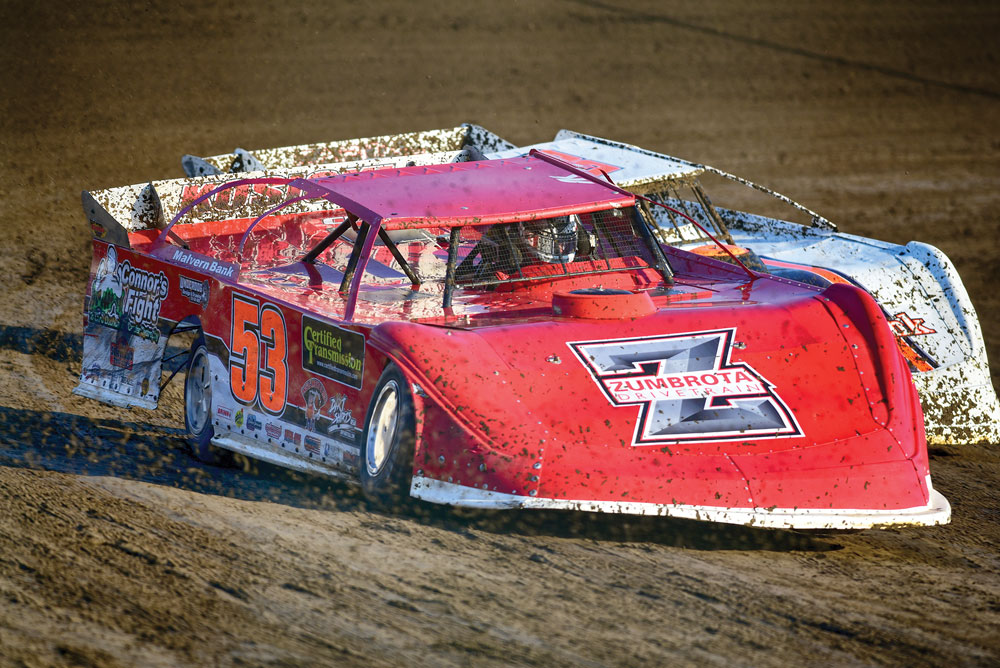
The Dirt Kings Tour “runs a lot of races near WISSOTA race tracks,” Shultz continued. “They can unload just the way they are, and their car’s legal and competitive. We’ve found a nice balance. Our races are split almost right down the middle between open motors and WISSOTA motors winning, and it’s really just a matter of preference and cost.”
On the subject of cost, Shultz said what a lot of his drivers do is “find what used to be a restricted or WISSOTA motor, one where the block’s already had two freshens. Now they can punch the block out, make it bigger. It’s no longer going to meet that WISSOTA rule, it’s now an open motor, but they can keep some life in the motor.
“We’re not seeing most of our competitors going out and buying $45,000–$50,000 motors, even though we allow it,” Shultz continued. “They’re keeping it to a reasonable cost, and they’re getting more life out of their engine that no longer meets the rules because it’s been freshened or done. I’ve got a really smart group of racers who know that when my shows average $2,500 to win, and my biggest purse is $5,000 to win, and three-quarters of them have day jobs, it doesn’t pay to spend 50 grand on a motor.”
The Dirt Kings Tour is “getting ready for our seventh year,” Shultz said, “and we’ve averaged over 23 cars every year every race. Most years have double-digit car counts of 100% participation, which again is better than most regional tours. We race side-by-side and fast, and because we do, the fans aren’t going to know the difference between a 15-second lap and a 16-second lap. All they care about is that they’re seeing a good race.
“And it’s loud. I guarantee we’re still very loud,” he added.
For the Malvern Bank Series and Hoker Trucking Series that make up SLMR’s racing, Joe Kosiski developed a set of engine packages so “you can run anything in our series,” Andrew Kosiski said, “where you can’t really do that everywhere. There’s absolutely no reason why, if you have a dirt late model with a motor in your shop, you can’t come race with us.”
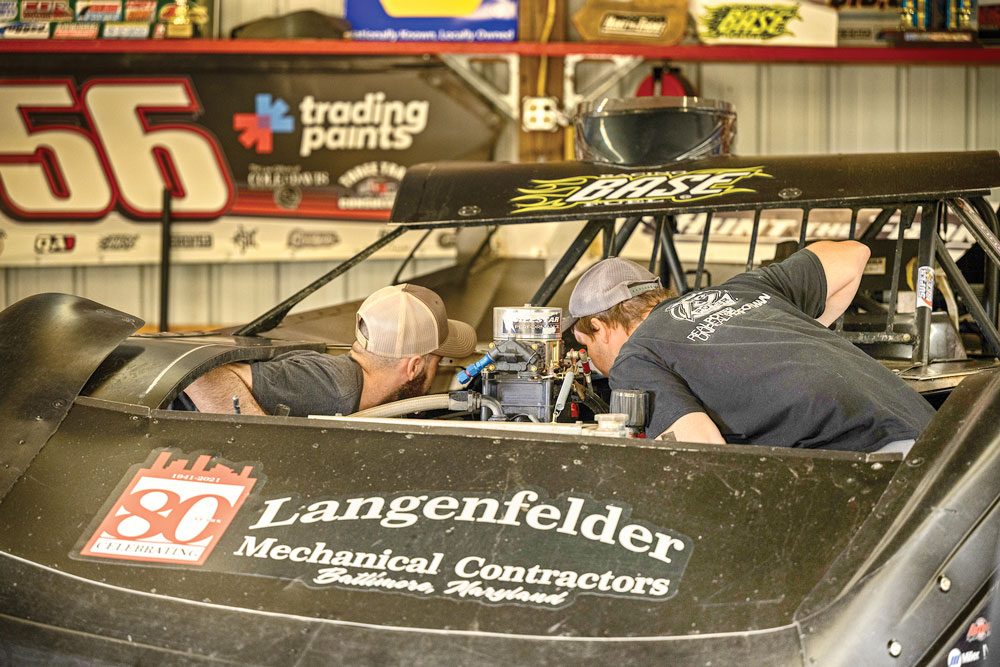
It has taken years, and “many, many hours on Speedway Motors’ dyno” for the Kosiskis to design these packages, which now produce around 650 hp, no matter the engine. “He’s really got it to where three or four of the motor options are wide open, and then the other ones have to be restricted” by running prescribed cup sizes in the restrictor plate, Kosiski said. “But he’s keeping it so close, and we’ve gotten it so I can damn near tell you what one or two cups do for horsepower and torque. We’ve tried to make it as user-friendly as we could, so a guy could go race for $30,000 to win in Wheatland, Missouri, and on his way home stop at one of our races, put some cups in his motor, and race with us.”
In 2022, “we had six different motor options win in our series, so that tells you they all can win at any given weekend in any given race,” Kosiski said.
It was from Kosiski that we heard the term tweener motor. “There are a lot of motors out there that people haven’t used. ‘Where am I going to take this motor and race? It’s not good enough to race with these guys, and it’s too good so it’s not legal to race with these other guys.’ We call it a tweener motor. ‘What am I supposed to do with this tweener motor?’ Well, guess what? Here’s a series that’ll let you run that tweener motor.
“Let’s say it has 1,000 laps on it and needs to be freshened. Call Bill Schlieper, call one of the other motor builders, and say, ‘I got this motor, can you freshen it? I want to run the SLMR series.’ At that point the engine builder says, ‘Hey, I know motors in that series. We can put some different heads on that motor if you want, and it would be even better.’ It really has opened up more opportunities for the racers and the engine builders,” Kosiski added.
National Championship
As it turns out, Bill Schlieper has an agenda that’s bigger than just getting more racers to use open engines.
“I’ve always been a proponent of PRI being positive toward the whole industry and engines built by any and all engine builders because that’s what you have for a market to sell,” he said. “You have all these competitors in pistons, all these competitors in rods, all these competitors in crankshafts, or cylinder heads, or blocks, or all the other parts that go in engines. You’re basically limiting them with crate motors coming in and becoming part of the series. So if we could work together and build point funds and national championship point funds for open engines, where any and all engine builders can participate, that allows all those parts manufacturers that are on the PRI Show floor to be a part of it. That’s what we gotta push for.”
SOURCES
Dirt Kings Late Model Tour
dirtkingstour.com
Edelbrock Group
edelbrockgroup.com
Andrew Kosiski
andrewkosiski53.com
Pro Power Racing
propowerracing.com
SLMR
slmrseries.com
 MEMBERSHIP LOGIN
MEMBERSHIP LOGIN JOIN PRI
JOIN PRI


